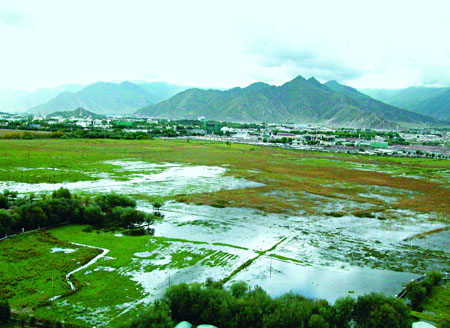| By the end of 2006, there were altogether 15 nature reserves at the autonomous regional level or above, including nine State class ones and six regional ones. Tibet's nature reserves cover a total area of 408,300 square km or 34 percent of the total land area of the region.

The Lhalu Wetland in Lhasa has been listed as a State-class Nature Reserve.
The huge glacier, abundant rainfall, dotted lakes, numerous rivers and wide watercourse form the vast-distributed, diversified highland wetlands in Tibet. According to survey, the Tibet Autonomous Region has more than six million hectares of wetland, accounting for about 4.9 percent of Tibet's total land area and ranking first in China. Most of the wetland is natural. Due to under-population and late economic development, the majority of wetland areas are not polluted by modern industry so that biodiversity on the wetlands basically keeps to their natural, primary ecological state.
In 2006, the State invested 200 million Yuan for the first time carrying out a project including the construction of 12 national-level nature reserves and the protection and recovery of 48 wetlands. This project involved the protection of the important wetlands, the recovery of degenerated wetlands and comprehensive demonstration for the reasonable use of wetlands.
Starting from 2007, Tibet's eight wetland nature reserves will be listed into the National Implementation Program for Wetland Protection Engineering (2005-2010) ratified by the State Council. Wetlands, as the "Species Gene Pool" and the important oxygen supply source, play a vital role in regulating climate, purifying water bodies and protecting bio-diversity. According to expert calculation, Lhalu Wetland, a national-level nature reserve on the outskirts of Lhasa, could alone absorb 78,800 tons of carbon dioxide and produce 53,700 tons of oxygen through photosynthesis each year. |





